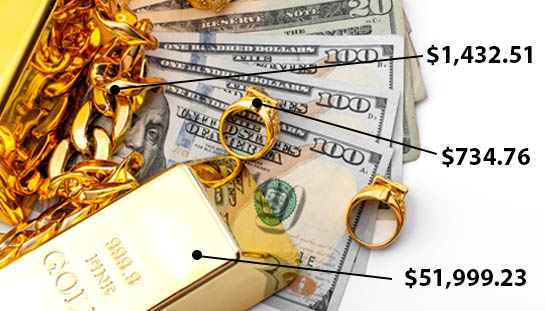Uncovering the Lifecycle of Precious Metals from Raw Material Extraction to Trade Supply
Wiki Article
Gold has been a coveted asset for numerous of years, valued not only for its visual allure but also for its utility in various markets. The process of gold begins with rock extraction, a procedure that involves mining. Miners explore for gold concentrations in the earth, which can be found in different shapes such as nuggets or grains associated with other minerals. There are several methods of mining, including placer mining and hard rock mining. Placer mining involves searching for gold in alluvial deposits, while hard rock mining requires digging deep into the ground to remove gold-bearing rocks. Both methods can be labor-intensive and require careful strategizing to be successful.
Once the rock is extracted from the ground, it must be treated to extract the gold from other materials. This procedure usually starts with breaking the ore into small pieces, making it easier to manage. After crushing, the ore is processed with agents to leach the gold. One common method is using cyanide, which combines with gold and allows it to be isolated from other minerals. This step is crucial because it improves the quality of the gold and conditions it for further refinement. The remaining waste click this are discarded as tailings, which must be handled properly to avoid environmental degradation.
After the gold is separated from the ore, it goes through treatment to achieve a higher level of refinement. This step often involves fusing the gold at elevated heat to remove foreign materials. Various procedures can be used for refining, including electrolysis and cupellation refining. Electrolysis uses electric charge to separate impurities from high-purity gold, while cupellation involves heating gold in a special furnace that removes unwanted elements. The final product is typically 99.9% pure gold, ready for use in ornaments, electronic devices, and other industries.

Once refined, gold is shaped into bullion or rounds before being supplied to exchanges around the world. Gold bullion are commonly used by financial institutions as a form of store of value or reserve asset. Rounds are often manufactured for collectors or general exchange, depending on their design and scarcity. Supply chains include bulk sellers and dealers who see sell gold goods to consumers. The value of gold shifts based on market demand and supply conditions, impacting how it is sold and traded globally.
The entire path of gold from mineral extraction to commercial supply highlights the challenge of this valuable metal’s supply chain. Each step requires precision and skill to ensure that the final material meets quality standards and fulfills end-user requirements. Understanding this process not only clarifies how valuable resources are acquired but also reinforces the importance of responsible mining practices that safeguard both workers and the biosphere. As global gold demand continues around the planet, valuing this process ensures that we value its importance beyond mere ornamentation, affirming its contribution in our economy and culture.